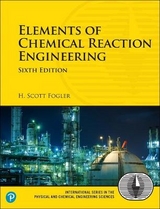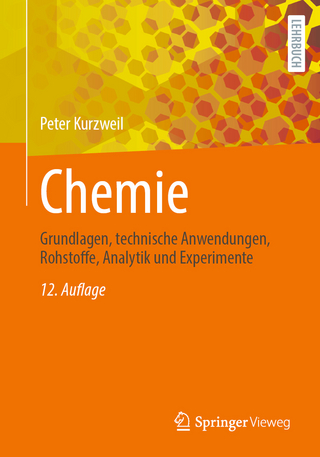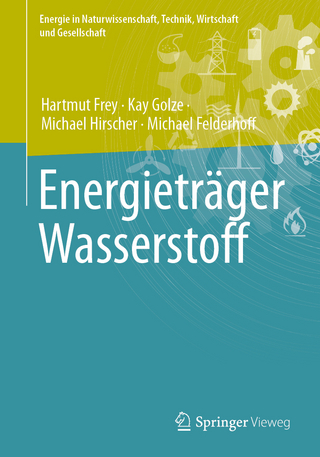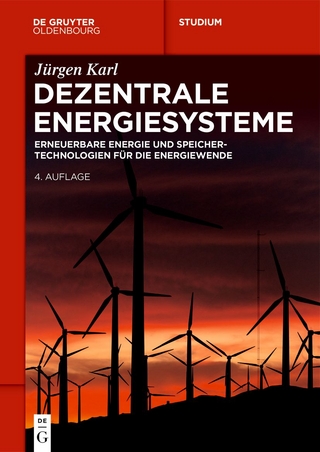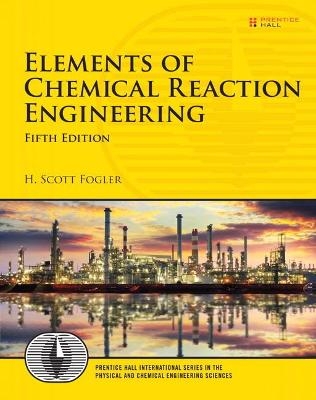
Elements of Chemical Reaction Engineering
Pearson (Verlag)
978-0-13-388751-8 (ISBN)
- Titel erscheint in neuer Auflage
- Artikel merken
For decades, H. Scott Fogler’s Elements of Chemical Reaction Engineering has been the world’s dominant text for courses in chemical reaction engineering. Now, Fogler has created a new, completely updated fifth edition of his internationally respected book. The result is a refined book that contains new examples and problems, as well as an updated companion Web site. More than ever, Fogler has successfully integrated text, visuals, and computer simulations to help both undergraduate and graduate students master all of the field’s fundamentals. As always, he links theory to practice through many relevant examples, ranging from standard isothermal and non-isothermal reactor design to applications, such as solar energy, blood clotting, and drug delivery, and computer chip manufacturing.
To promote the transfer of key skills to real-life settings, Fogler presents the following three styles of problems:
Straightforward problems that reinforce the principles of chemical reaction engineering
Living Example Problems (LEPs) that allow students to rapidly explore the issues and look for optimal solutions
Open-ended problems that encourage students to practice creative problem-solving skills
About the Web Site
The companion Web site offers extensive enrichment opportunities and additional content, including
Complete PowerPoint slides for lecture notes for chemical reaction engineering classes.
Links to additional software, including POLYMATH™, Matlab™, Wolfram Mathematica™, AspenTech™, and COMSOL™.
Interactive learning resources linked to each chapter, including Learning Objectives, Summary Notes, Web Modules, Interactive Computer Games, Solved Problems, FAQs, additional homework problems, and links to Learncheme.
Living Example Problems that provide more than eighty interactive simulations, allowing students to explore the examples and ask “what-if” questions. The LEPs are unique to this book.
Professional Reference Shelf, which includes advanced content on reactors, weighted least squares, experimental planning, laboratory reactors, pharmacokinetics, wire gauze reactors, trickle bed reactors, fluidized bed reactors, CVD boat reactors, detailed explanations of key derivations, and more.
Problem-solving strategies and insights on creative and critical thinking.
H. Scott Fogler is the Ame and Catherine Vennema Professor of Chemical Engineering and the Arthur F. Thurnau Professor at the University of Michigan. He has been research advisor to forty-five Ph.D. students, and has more than two hundred thirty-five refereed publications. He was 2009 President of the American Institute of Chemical Engineers. Fogler has chaired ASEE’s Chemical Engineering Division, served as director of the American Institute of Chemical Engineers, and earned the Warren K. Lewis Award from AIChE for contributions to chemical engineering education. He has received the Chemical Manufacturers Association’s National Catalyst Award and the 2010 Malcom E. Pruitt Award from the Council for Chemical Research.
Preface xvii
About the Author xxxiii
Chapter 1: Mole Balances 1
1.1 The Rate of Reaction, –rA 4
1.2 The General Mole Balance Equation 8
1.3 Batch Reactors (BRs) 10
1.4 Continuous-Flow Reactors 12
1.5 Industrial Reactors 22
Chapter 2: Conversion and Reactor Sizing 31
2.1 Definition of Conversion 32
2.2 Batch Reactor Design Equations 32
2.3 Design Equations for Flow Reactors 35
2.4 Sizing Continuous-Flow Reactors 38
2.5 Reactors in Series 47
2.6 Some Further Definitions 58
Chapter 3: Rate Laws 69
3.1 Basic Definitions 70
3.2 The Reaction Order and the Rate Law 72
3.3 Rates and the Reaction Rate Constant 83
3.4 Present Status of Our Approach to Reactor Sizing and Design 93
Chapter 4: Stoichiometry 105
4.1 Batch Systems 107
4.2 Flow Systems 113
4.3 Reversible Reactions and Equilibrium Conversion 126
Chapter 5: Isothermal Reactor Design: Conversion 139
5.1 Design Structure for Isothermal Reactors 140
5.2 Batch Reactors (BRs) 144
5.3 Continuous-Stirred Tank Reactors (CSTRs) 152
5.4 Tubular Reactors 162
5.5 Pressure Drop in Reactors 169
5.6 Synthesizing the Design of a Chemical Plant 190
Chapter 6: Isothermal Reactor Design: Moles and Molar Flow Rates 207
6.1 The Molar Flow Rate Balance Algorithm 208
6.2 Mole Balances on CSTRs, PFRs, PBRs, and Batch Reactors 208
6.3 Application of the PFR Molar Flow Rate Algorithm to a Microreactor 212
6.4 Membrane Reactors 217
6.5 Unsteady-State Operation of Stirred Reactors 225
6.6 Semibatch Reactors 227
Chapter 7: Collection and Analysis of Rate Data 243
7.1 The Algorithm for Data Analysis 244
7.2 Determining the Reaction Order for Each of Two Reactants Using the Method of Excess 246
7.3 Integral Method 247
7.4 Differential Method of Analysis 251
7.5 Nonlinear Regression 258
7.6 Reaction-Rate Data from Differential Reactors 264
7.7 Experimental Planning 271
Chapter 8: Multiple Reactions 279
8.1 Definitions 280
8.2 Algorithm for Multiple Reactions 282
8.3 Parallel Reactions 285
8.4 Reactions in Series 294
8.5 Complex Reactions 304
8.6 Membrane Reactors to Improve Selectivity in Multiple Reactions 312
8.7 Sorting It All Out 317
8.8 The Fun Part 317
Chapter 9: Reaction Mechanisms, Pathways, Bioreactions, and Bioreactors 333
9.1 Active Intermediates and Nonelementary Rate Laws 334
9.2 Enzymatic Reaction Fundamentals 343
9.3 Inhibition of Enzyme Reactions 356
9.4 Bioreactors and Biosynthesis 364
Chapter 10: Catalysis and Catalytic Reactors 399
10.1 Catalysts 399
10.2 Steps in a Catalytic Reaction 405
10.3 Synthesizing a Rate Law, Mechanism, and Rate-Limiting Step 421
10.4 Heterogeneous Data Analysis for Reactor Design 436
10.5 Reaction Engineering in Microelectronic Fabrication 446
10.6 Model Discrimination 451
10.7 Catalyst Deactivation 454
Chapter 11: Nonisothermal Reactor Design—The Steady-State Energy Balance and Adiabatic PFR Applications 493
11.1 Rationale 494
11.2 The Energy Balance 495
11.3 The User-Friendly Energy Balance Equations 502
11.4 Adiabatic Operation 508
11.5 Adiabatic Equilibrium Conversion 518
11.6 Reactor Staging 522
11.7 Optimum Feed Temperature 526
Chapter 12: Steady-State Nonisothermal Reactor Design—Flow Reactors with Heat Exchange 539
12.1 Steady-State Tubular Reactor with Heat Exchange 540
12.2 Balance on the Heat-Transfer Fluid 543
12.3 Algorithm for PFR/PBR Design with Heat Effects 545
12.4 CSTR with Heat Effects 564
12.5 Multiple Steady States (MSS) 574
12.6 Nonisothermal Multiple Chemical Reactions 581
12.7 Radial and Axial Variations in a Tubular Reactor 595
12.8 Safety 603
Chapter 13: Unsteady-State Nonisothermal Reactor Design 629
13.1 Unsteady-State Energy Balance 630
13.2 Energy Balance on Batch Reactors 632
13.3 Semibatch Reactors with a Heat Exchanger 646
13.4 Unsteady Operation of a CSTR 651
13.5 Nonisothermal Multiple Reactions 656
Chapter 14: Mass Transfer Limitations in Reacting Systems 679
14.1 Diffusion Fundamentals 680
14.2 Binary Diffusion 684
14.3 Diffusion Through a Stagnant Film 688
14.4 The Mass Transfer Coefficient 690
14.5 What If . . . ? (Parameter Sensitivity) 705
Chapter 15: Diffusion and Reaction 719
15.1 Diffusion and Reactions in Homogeneous Systems 720
15.2 Diffusion and Reactions in Spherical Catalyst Pellets 720
15.3 The Internal Effectiveness Factor 730
15.4 Falsified Kinetics 737
15.5 Overall Effectiveness Factor 739
15.6 Estimation of Diffusion- and Reaction-Limited Regimes 743
15.7 Mass Transfer and Reaction in a Packed Bed 744
15.8 Determination of Limiting Situations from Reaction-Rate Data 750
15.9 Multiphase Reactors in the Professional Reference Shelf 751
15.10 Fluidized Bed Reactors 753
15.11 Chemical Vapor Deposition (CVD) 753
Chapter 16: Residence Time Distributions of Chemical Reactors 767
16.1 General Considerations 767
16.2 Measurement of the RTD 770
16.3 Characteristics of the RTD 777
16.4 RTD in Ideal Reactors 784
16.5 PFR/CSTR Series RTD 789
16.6 Diagnostics and Troubleshooting 793
Chapter 17: Predicting Conversion Directly from the Residence Time Distribution 807
17.1 Modeling Nonideal Reactors Using the RTD 808
17.2 Zero-Adjustable-Parameter Models 810
17.3 Using Software Packages 827
17.4 RTD and Multiple Reactions 830
Chapter 18: Models for Nonideal Reactors 845
18.1 Some Guidelines for Developing Models 846
18.2 The Tanks-in-Series (T-I-S) One-Parameter Model 848
18.3 Dispersion One-Parameter Model 852
18.4 Flow, Reaction, and Dispersion 854
18.5 Tanks-in-Series Model versus Dispersion Model 869
18.6 Numerical Solutions to Flows with Dispersion and Reaction 870
18.7 Two-Parameter Models—Modeling Real Reactors with Combinations of Ideal Reactors 871
18.8 Use of Software Packages to Determine the Model Parameters 880
18.9 Other Models of Nonideal Reactors Using CSTRs and PFRs 882
18.10 Applications to Pharmacokinetic Modeling 883
Appendix A: Numerical Techniques 897
A.1 Useful Integrals in Reactor Design 897
A.2 Equal-Area Graphical Differentiation 898
A.3 Solutions to Differential Equations 900
A.4 Numerical Evaluation of Integrals 901
A.5 Semilog Graphs 903
A.6 Software Packages 903
Appendix B: Ideal Gas Constant and Conversion Factors 905
Appendix C: Thermodynamic Relationships Involving the Equilibrium Constant 909
Appendix D: Software Packages 915
D.1 Polymath 915
D.2 MATLAB 916
D.3 Aspen 916
D.4 COMSOL Multiphysics 917
Appendix E: Rate Law Data 919
Appendix F: Nomenclature 921
Appendix G: Open-Ended Problems 925
G.1 Design of Reaction Engineering Experiment 925
G.2 Effective Lubricant Design 925
G.3 Peach Bottom Nuclear Reactor 925
G.4 Underground Wet Oxidation 926
G.5 Hydrodesulfurization Reactor Design 926
G.6 Continuous Bioprocessing 926
G.7 Methanol Synthesis 926
G.8 Cajun Seafood Gumbo 926
G.9 Alcohol Metabolism 927
G.10 Methanol Poisoning 928
Appendix H: Use of Computational Chemistry Software Packages 929
Appendix I: How to Use the CRE Web Resources 931
I.1 CRE Web Resources Components 931
I.2 How the Web Can Help Your Learning Style 933
I.3 Navigation 934
Index 937
| Reihe/Serie | International Series in the Physical and Chemical Engineering Sciences |
|---|---|
| Sprache | englisch |
| Maße | 206 x 257 mm |
| Gewicht | 1774 g |
| Themenwelt | Naturwissenschaften ► Chemie ► Technische Chemie |
| Technik ► Umwelttechnik / Biotechnologie | |
| ISBN-10 | 0-13-388751-0 / 0133887510 |
| ISBN-13 | 978-0-13-388751-8 / 9780133887518 |
| Zustand | Neuware |
| Informationen gemäß Produktsicherheitsverordnung (GPSR) | |
| Haben Sie eine Frage zum Produkt? |
aus dem Bereich
